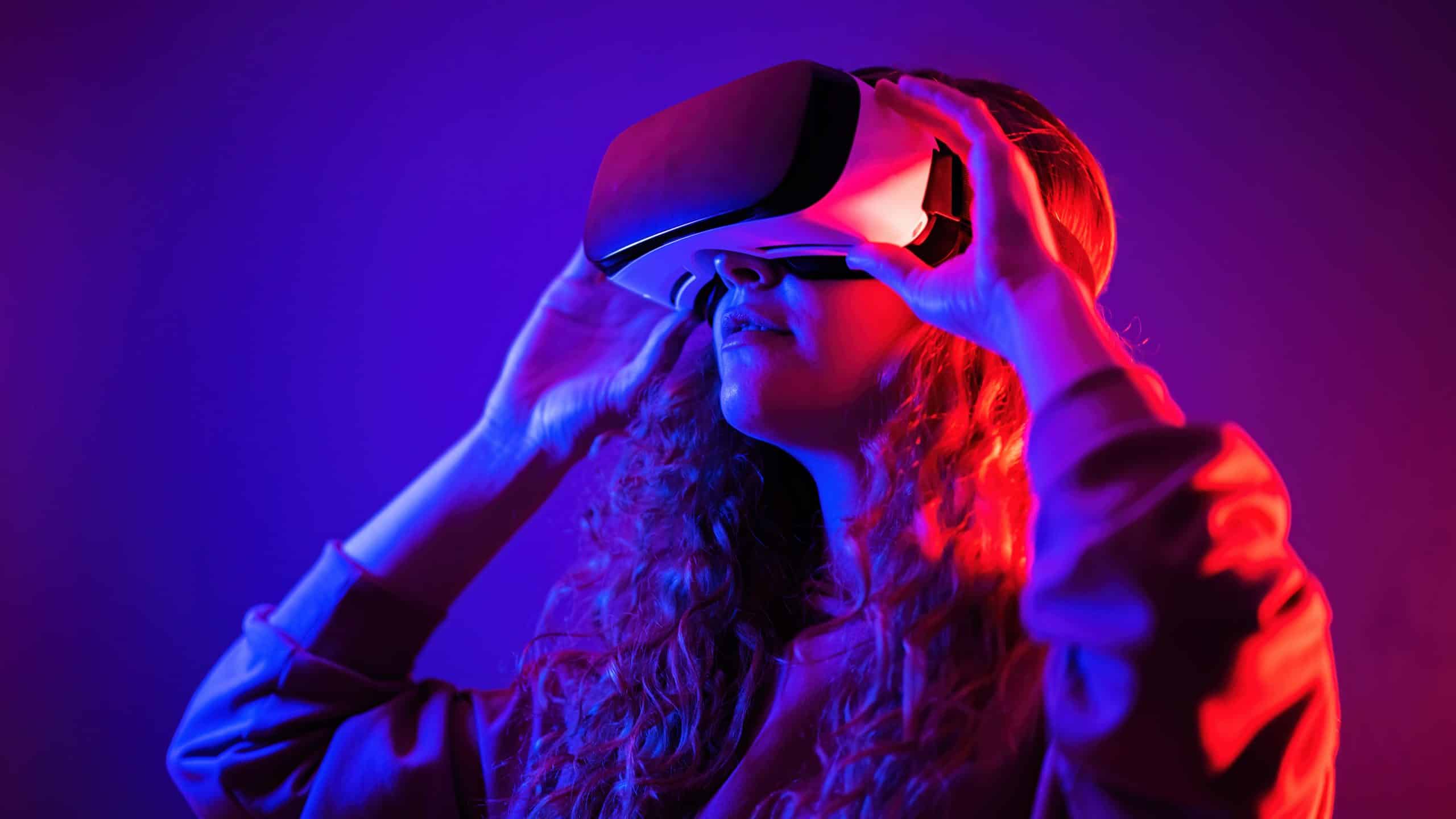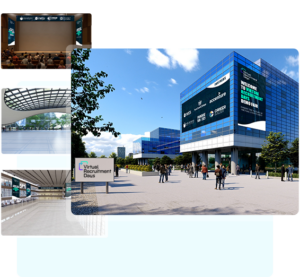In the ever-evolving landscape of virtual events, Virtual Reality (VR) has emerged as a transformative technology that has redefined how people connect, interact, and engage in the digital realm. Virtual Reality (VR) has evolved as a game-changing technology that has completely changed how people connect, interact, and engage in the digital world in the ever-changing world of virtual events. Virtual reality (VR) has opened new applications in the field of virtual events, from immersive venue experiences to ground-breaking networking prospects. This blog explores some of the cutting-edge uses of virtual reality, providing an outlook on the future of online meetings.
1. Immersive Event Environments
Static websites and video streaming are no longer the exclusive venues for virtual events. With virtual reality (VR), attendees can enter immersive event settings complete with interactive 3D areas that imitate real-world event locations. Visitors can move around these virtual venues, stop by exhibits, and take part in activities just like they would in person.
2. Realistic Networking Opportunities
With the advent of virtual reality, virtual networking has surpassed traditional video conferencing. To facilitate face-to-face chats and build connections that resemble in-person encounters, attendees can create avatars and explore virtual networking spaces. Attendee engagement is increased and lasting relationships are fostered by this immersive networking experience.
3. Virtual Trade Shows and Exhibitions
Virtual reality (VR) has made novel strategies more accessible to sponsors and exhibitors. Virtual reality (VR) booths give customers the ability to engage with goods and services in a dynamic, 3D environment. These virtual trade shows eliminate the need for physical presence, reducing costs and expanding the reach of exhibitors.
4. Dynamic Product Demonstrations
VR offers an unprecedented platform for product demonstrations. Attendees can use VR headsets and experience products or services in a simulated environment. This enables industries ranging from automotive to real estate to provide interactive product launches and engaging demonstrations.
5. Global Inclusivity
Virtual reality (VR) breaks down geographical barriers and enables participants to attend events virtually from anywhere in the world without having to physically travel there. The promotion of global inclusivity has created new opportunities for intercultural networking, knowledge exchange, and cooperation.
6. Immersive Workshops and Trainings
VR is transforming seminars and training sessions by enabling interactive experiences within a virtual environment. Virtual reality (VR) provides a secure and regulated environment for skill development and learning, ranging from art lessons to medical simulations.
7. Keynote Speakers in VR
Keynote speakers can deliver presentations in a captivating and immersive manner through VR. Attendees can virtually share the same room as the speaker, no matter where they are located, fostering a level of engagement and immersion that transcends physical boundaries.
8. Augmented Reality (AR) Integration
Virtual Reality (VR) and Augmented Reality (AR) together enhance interactive experience. Using AR glasses or smartphone apps, guests may examine real-time information, including booth details, event schedules, and information about other attendees.
9. Audience Engagement Through Gamification
With VR, gamification has grown more interactive. To encourage participants to explore the virtual environment, interact with sponsors, and win rewards, organizers might design games and challenges. These gaming components provide virtual events a fun and competitive edge.
10. Hybrid Events
The concept of hybrid events—which combine in-person and online participation—is gaining popularity. Through the seamless integration of virtual reality (VR), distant guests can explore the venue, take part in real-time discussions, and interact with both virtual and in-person attendees during physical events.
In conclusion, virtual reality is bringing in a new age of innovation for virtual events by offering fresh approaches to captivate guests, establish worldwide connections, and produce lifelong memories. The possibilities for innovative VR applications in virtual events are virtually endless as technology develops, offering both event planners and attendees an exciting future. Virtual reality’s immersive, dynamic, and captivating qualities are changing the virtual event scene and opening doors for significant and memorable digital meetings.
Would you like to see what this can look like? Book a demo.






